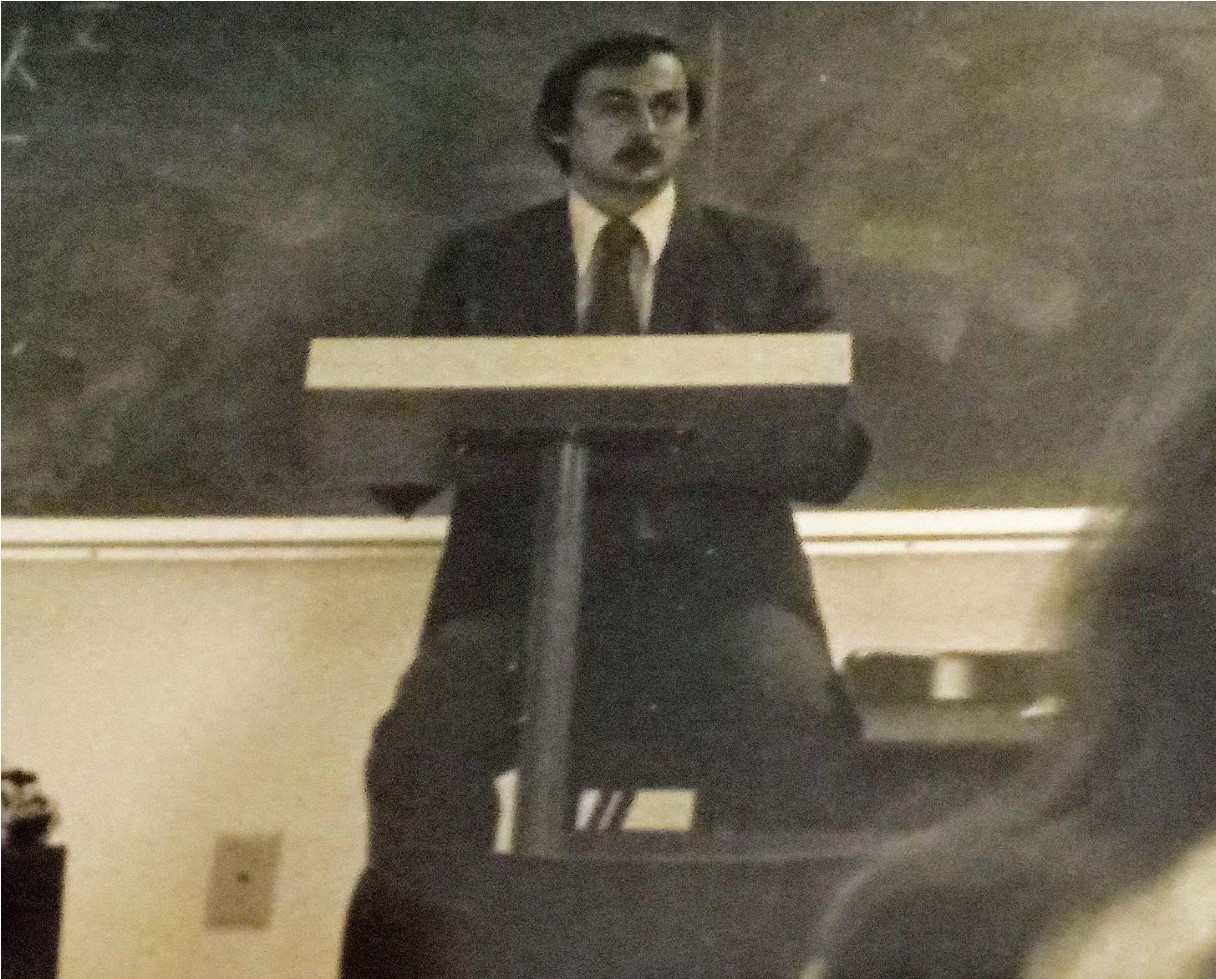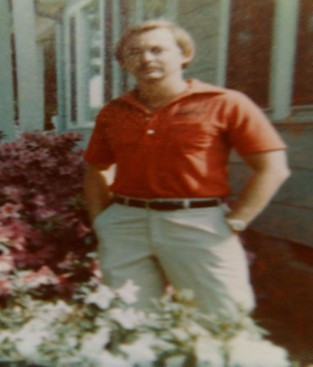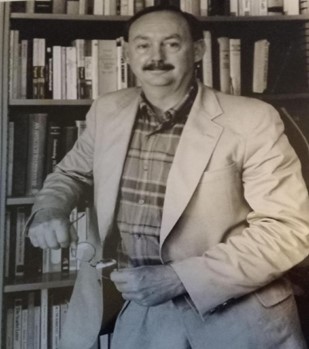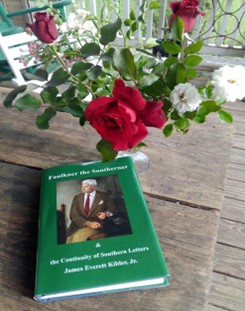A review of Faulkner the Southerner (Abbeville Institute Press, 2023) by James E. Kibler
What more can be said than what has already been said about the life and work of William Faulkner? For decades, scholars and lay enthusiasts alike have written a myriad of books (and even more articles) analyzing the techniques that formed, and the influences and beliefs that informed, such seminal works as The Sound and the Fury, As I Lay Dying, and Absalom, Absalom! While it is true that these novels deserve all of the attention that they have received over the past ninety years, it also remains true that quantity is no measure of quality. Every year sees the publication of tomes dedicated to examining the world of Yoknapatawpha County in a new light, offering “fresh” perspectives and interpretations that all too often end up being shoddy attempts to relegate the author to the limiting dogmas of various ideological camps. Many, unfortunately, degenerate into mere sensationalism. One can see a recent example of this decadence in Phillip Gordon’s Gay Faulkner: Uncovering a Homosexual Presence in Yoknapatawpha and Beyond (University Press of Mississippi, 2019), the cover of which shows Rowan Oak behind its cedars and beneath a sky that have been superimposed by the now infamous rainbow. This may be an extreme example of the sorry state of Faulkner studies, but even among the best academic biographies that have been written on Faulkner none seem to have adequately approached the factors that could help explain how brilliance could have emerged from such a place and time as Oxford, Mississippi in the first half of the twentieth century. Fortunately for Faulkner’s true audience, a new study (one that does not claim to offer novel, modern, or au courant insights) of his work has proven that sensible criticism is far from moribund. The book is Dr. James E. Kibler’s Faulkner the Southerner & the Continuity of Southern Letters (Abbeville Institute Press, 2023).
This volume, the result of over fifty years of studying the inspired creator of Yoknapatawpha County, holds the distinction of being the first of its kind devoted to addressing how the themes, images, and worldview of Faulkner’s corpus are particularly Southern. That’s a surprising distinction, especially when one considers that Faulkner is still seen as the quintessential Southern author, but it is a true distinction nonetheless. One of the most distinguished Faulkner scholars in the South today, James Everett Kibler began his undergraduate studies in the early 1960s. After eight years of study he earned a doctorate from the University of South Carolina in 1970, writing his dissertation on William Faulkner’s The Hamlet. Over the next forty years, Dr. Kibler taught Faulkner’s works to thousands of undergraduate and graduate students at the University of South Carolina and the University of Georgia. We are fortunate that this work has finally been published, for as Dr. Kibler explains in its introduction, “I wrote the first version of the text in 2010 and revised and expanded it in 2012, exactly fifty years after Faulkner’s death. Here, in this present form of 2022, Faulkner the Southerner is now revised and expanded a final time.” Now, thirteen years after Dr. Kibler first put pen to paper, his study of Faulkner is complete and available worldwide.

Dr. Kibler teaching Faulkner’s works during a Southern literature survey class at UGA in the early 1980s.
Many of the traits in which the best of Southern literature has become known for have been thoroughly treated by Dr. Kibler with their own chapters. Chapter six, for example, discusses Faulkner’s incredible sense of humor, which remains one of the most neglected aspects of his writings. Dr. Kibler outlines how much of Faulkner’s work- from the obviously humorous pieces like “Spotted Horses” to even the more macabre sections of works that include, among many others, As I Lay Dying– are infused with a comic quality that has been passed down from a lineage that traces back to Southern humorists such as Mark Twain and George Washington Harris. In fact, as Dr. Kibler so convincingly shows, the influence of G. W. Harris on Faulkner was so strong that As I Lay Dying can be justly seen as a retelling of the former’s rather obscure story, “Well! Dad’s Dead!” Both of these works successfully show that humor can even exist in such dismal tasks as taking the body of a parent to be interred in the family graveyard. Southern storytellers have often displayed an aptitude for a hyperbolic style humor, expressed most effectively in tall tales, and almost anyone reared in the rural South has likely been regaled with tales in that vein at some point in their life. From the South’s inception, especially in the days before instant access to what passes for entertainment in the modern world, the art of storytelling was incessantly practiced. Free from living under the icy, humorless mien of the New England Puritans, and being a part of a culture that was not yet dominated by the hustle and bustle of an industrial economy, rural Southerners appreciated funny stories that were told well. It is a testament to the greatness of William Faulkner that he was able to incorporate this risible pastime into high art. Humor of this sort remains a salient feature in Southern fiction, appearing in our time in works such as Dr. Kibler’s Child to the Waters (Pelican Publishing, 2003) and even as recently as Wendell Berry’s How It Went (Counterpoint Press, 2022).
In the academic discussions that center around the agrarian writers that the South has produced, William Faulkner is seldom, if ever, mentioned. As Dr. Kibler shows in the second chapter, it is a mistake not to consider him one of the finest writers in the agrarian tradition. Farming and man’s relation to the natural world were always key elements in Faulkner’s work. For an indication of how important agriculture and the rural life were to the great writer, one only needs to consider the fact that, in the depths of the Great Depression, he purchased 320 acres to farm outside of Oxford. Dr. Kibler explains that this action held an even deeper significance, for the land that Faulkner bought was once owned by his grandfather, John Wesley Thompson Falkner (“the Young Colonel”). Steeped in the classics, which upheld the life lived on and from the land as an ideal, Faulkner undertook a major reacquisition of his ancestors’ holdings and was thus able to have a quiet, bucolic piece of Mississippi for himself. Naming the place Greenfield Farm, its new steward planted trees, crops of hay, cotton, and corn, and raised livestock. Throughout his novels and short stories, Faulkner displays a strong familiarity with, and a deep appreciation of, the natural world. Images abound of such things as catalpa and dogwood trees, wistaria vines, and the smell of honeysuckle that so memorably haunts Quentin Compson. Even the animals in Faulkner’s fiction often hold a parallel symbolic significance informed by folklore, like the jaybirds in the final chapter of The Sound and the Fury at which Luster throws rocks and banishes with the words, “Git on back to hell, whar you belong at. ’Taint Monday yit.” Of the many things which William Faulkner was not, he was certainly no armchair agrarian. Like the best of classical literature, Southern letters have consistently promoted rural life and the value of good husbandry. This can be seen throughout the works of writers ranging from William Byrd, Thomas Jefferson, William Gilmore Simms, the Fugitive Agrarians, and Archibald Rutledge to contemporary writers such as Wendell Berry, Fred Chappell, and Dr. Kibler himself (to name only a few). Faulkner fits squarely into this tradition, and his writings never smack of the disdain for rural life that all too often permeates the fiction produced by writers from other sections of the United States.
Another topic that is essential to have a grasp of in order to engage in a serious reading of Faulkner’s work is the history and implications of the War Between the States. While there is not a chapter on the War itself, Dr. Kibler has not failed to give the conflict its due. One of the most moving passages appears in chapter seven- “The Creed of Memory and Endurance”. Here, Dr. Kibler recounts a visit that he made to Rowan Oak in May 1970. Less than a decade after Faulkner’s death, there remained in the backyard a decrepit pear tree, under the lean of which the writer had installed a cedar post. Many people would have deemed the tree unsightly and ordered its removal, but Mr. Faulkner decided to buttress the old tree and let it live for as long as possible. Mulling over the reasons behind this act of preservation, Dr. Kibler reminds us that the tree could very well have been a witness to the burning of Oxford in 1864. He writes, “The fire’s cinders may have floated there to nourish it. It may have been witness to the fire’s glare that leveled the town.” Faulkner undoubtedly realized this, and the symbol of the tree, having as it did survived war, famine, and drought over the course of its life, served as a physical example of those very themes that defined the greatest works that its owner produced. These qualities of endurance can easily bring to mind the life of Dilsey Gibson, who, as Faulkner portrays her in The Sound and the Fury, was faithful to the Compson family from their prosperous antebellum years to their decline in the first part of the twentieth century; “I’ve seed de first en de last”, she says. In his 1933 introduction to The Sound and the Fury, Faulkner explained that Dilsey, in her constancy, was to remain as the family’s future, “to stand above the fallen ruins of the family like a ruined chimney, gaunt, patient and indomitable…” The postbellum image of the ruined chimney would not have been lost on the Southerner of Faulkner’s day. This theme of endurance in the face of defeat was also echoed in Faulkner’s Nobel Prize acceptance speech, where he said “that when the last dingdong of doom has clanged and faded from the last worthless rock hanging tideless in the last red and dying evening, that even then there will still be one more sound: that of [man’s] puny inexhaustible voice, still talking.” There is no real understanding of the achievement of William Faulkner without the recognition that a man such as himself, coming from a family and living amongst a people who survived and suffered the greatest holocaust in the nation’s history, was able to produce some of the greatest literature that our world has ever known. Donald Davidson put it nicely when he wrote in his essay “Why The Modern South Has A Great Literature”, “a prevalence of rural society, devoted to cotton-growing, afflicted by sharecropping, rather poverty-stricken, conservative in religion and politics, prone to love the past rather than the future, chockful of all the prejudices and customs of the South- that is what it takes to produce a William Faulkner.”

Dr. Kibler shortly after finishing his dissertation on The Hamlet in 1970, the same year that he visited Rowan Oak.
Most current Faulkner criticism can be divided into two categories- namely, works that try to belittle the Mississippian and his achievements, and those that, accepting the fact that the brilliance of his work is indisputable, try to mold Faulkner into their own image and place him under a specific ideological umbrella. Above all, opposed as he was to submitting to the narrow dictates of various -isms and -ologies, William Faulkner was an individual who valued independence and eschewed groupthink. A sign of this can be seen in Faulkner’s devotion to history, a devotion without which he never could have written the famous line from Requiem for a Nun, “The past is never dead. It’s not even past.” Dr. Kibler shrewdly observes that, “To be cognizant of history in an anti-historical, future-focused, progress-worshipping, machine-dominated, rootless, and planned-obsolescent America in itself makes one out of step and a nonconformist.” Faulkner correctly saw that the rise of totalitarianism and consumerism during the first half of the twentieth century would be a pernicious force against personal autonomy. In his “Address To the Graduating Class of University High School”, delivered in Oxford, Mississippi on May 28, 1951, he made the following statement: “Our danger is the forces in the world today which are trying to use man’s fear to rob him of his individuality, his soul, trying to reduce him to an unthinking mass by fear and bribery- giving him free food which he has not earned, easy and valueless money which he has not worked for;- the economies or ideologies or political systems, communist or socialist or democratic, whatever they wish to call themselves, the tyrants and the politicians, American or European or Asiatic, whatever they call themselves, who would reduce man to one obedient mass for their own aggrandizement and power, or because they themselves are baffled and afraid, afraid of, or incapable of, believing in man’s capacity for courage and endurance and sacrifice. That is what we must resist, if we are to change the world for man’s peace and prosperity.” Here, as in most of his essays and speeches, Faulkner reveals a prescience so remarkable that his words could have been written just last week. Dr. Kibler does his subject justice, for he shows clearly that William Faulkner was an individual first and foremost, and the regnant ideologies and fads of his own time only served to strengthen his appropriate and informed intransigence. As G.K. Chesterton put it in The Everlasting Man, “A dead thing can go with the stream, but only a living thing can go against it.”
One particularly helpful section of the book is the appendix, which contains a list of several books that were in Faulkner’s library that were not included in the official catalogue published after his death. Dr. Kibler was able to make a record of these titles during his visit to Rowan Oak in 1970. Of those that were not included in the first register that was made in the 1960s, the most important omission was that of a well-used pocket New Testament, which Dr. Kibler himself found in Faulkner’s desk directly beneath the typewriter. Scriptural allusions are prominent in Faulkner’s work, and it should not surprise his readers that he kept a copy of the New Testament close by. In addition to the volumes that were not initially catalogued, several books were brought to Rowan Oak after Faulkner died in 1962. They doubtlessly came from the family’s residence in Charlottesville, Virginia, for they were brought in to fill the blank spaces of the library’s shelving by William’s wife, Estelle. While some of these volumes were hers, many came from her husband’s personal collection. Among these was a complete set of Douglas Southall Freeman’s R. E. Lee, all four volumes of which were signed by Faulkner himself. Of course, Faulkner could not have chosen a more appropriate set of books to have on hand during the years he spent living in the Old Dominion.

Dr. Kibler in his office at the University of Georgia, circa 1990.
While Faulkner the Southerner is a masterful work of literary criticism, it would be a mistake to put it squarely in that genre. Any devotee of Southern literature will be pleased to find that it is part memoir, part biography, and an engaging study of Southern culture in both the twentieth and the twenty-first century. In this way, Faulkner the Southerner fits comfortably on the spectrum between John Faulkner’s My Brother Bill (Trident Press, 1963) and the works of Cleanth Brooks. Although Dr. Kibler did not know Mr. Faulkner personally, he learned from many people who knew him well. One figure that is often referenced in the book is Dr. James B. Meriwether, under whose teaching Dr. Kibler first sat in 1964 at the University of South Carolina. Meriwether, who at one time worked for the great writer as a gardener at Rowan Oak and edited the collection Essays, Speeches, and Public Letters of William Faulkner (Random House, 1965), shared many valuable vignettes about his time with Faulkner to his students, and it is our great fortune that many of these have now been recorded for the very first time. Another mutual friend that Dr. Kibler had with Faulkner was the venerable Shelby Foote, to whom the present book was kindly dedicated. As with his treatment of Dr. Meriwether, Dr. Kibler has faithfully given the reader several anecdotes and examples of the gems of wisdom that he gleaned from a long friendship with Mr. Foote. These reminiscences alone make Dr. Kibler’s latest work an essential read for anyone who wishes to deepen their appreciation for the world of Southern letters, and it is through these important associations that a veritable succession emerges which leads back to Mr. Faulkner himself. This volume gives the Faulkner students of our time the opportunity to become a part of that continuity to which its subtitle speaks. Additionally, for anyone who has already encountered the work of Dr. Kibler- whether through his poetry, novels, or nonfiction- this book displays those qualities for which he has been consistently praised over the course of his career. These attributes, to name only a few, include a deep fidelity to the material that he has worked with, an elegant and lyrical diction, and a contagious enthusiasm for the subject at hand. His readers will also gain insight into how Faulkner’s works influenced his own Clay Bank County series of novels, which are increasingly being recognized as classics of our own time.
If there is any truth in the adage that “it takes one to know one”, then the reader will quickly realize that Kibler, a true Southern writer, knows William Faulkner. This brave book will allow any serious Faulkner enthusiast the opportunity to see how an understanding of the traditional Southern mores is essential to understanding the work of America’s most brilliant writer. Instead of forcing Faulkner, like a square peg into a round hole, to fit comfortably under an ideological banner, Dr. Kibler allows Faulkner’s work to speak for him. Though the book focuses on the influence of the South on Faulkner, it nonetheless allows the great author to emerge as more than a mere abstraction. The result is a vivid portrait of Faulkner the man, an individual who was the product of his time and place. After reading this book, one cannot help but ask- how is it that, in the sixty years since the death of the great man of letters, the reading public has never been presented with a book that focuses on the centrality of Faulkner’s Southernness? Modern academia, in its increasingly pitiful derangement, would never allow the subject to be properly treated in our time- nor would it be able to produce a scholar of such caliber and cultural awareness as to do the subject justice. Fortunately, this gap, increasingly intentional, has now been filled. In an essay on Faulkner’s The Unvanquished, the late M. E. Bradford remarked that, “criticism is successful only if it encourages a return to its referent, to the thing fearfully and wonderfully made. Each act of reading Faulkner as I believe he expected to be read is for Southerners also an act of piety.” (Generations of the Faithful Heart, Sherwood Sugden & Company, 1983). By these terms, Faulkner the Southerner is a paragon of successful criticism. This is a commendable book, and the value that it adds to the world of Faulkner scholarship will ensure that it will be referenced and read with pleasure for years to come.







Outstanding analysis by Mr. Seay. Thank God we still have a remnant of his generation who truly understands and values who they are and where they come from. Because of this it gives hope that truth will not be broken. This land is old and it knows patience. I will add the following comment as my small contribution to this timely book. God knows it is needed now more then ever before…..”To understand Faulkner you have to understand where he came from. You have to understand his people. He was well aware of what was done to the South because it was in his neighborhood,like our ancestors neighborhoods. The edited Faulkner of modern academics is a hollow shell of Faulkner. James E. Kibler is the closest living connection we have to the complete Faulkner and his South,which is our South. His connections and friendship with James B.Meriwether gave him a perspective of Faulkner that no other Faulkner writer had. We are fortunate indeed that he has now shared his 5 decade archive of notes and knowledge with us. The photos are an additional treasure. If you want to learn more about who you are as a Southron and who your people were you will be glad you have this book. Regardless of what part of the South you come from our ancestors and the people around them are found in this book.” All the that’s left is to say get the book.